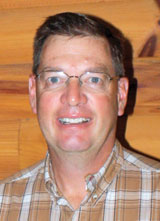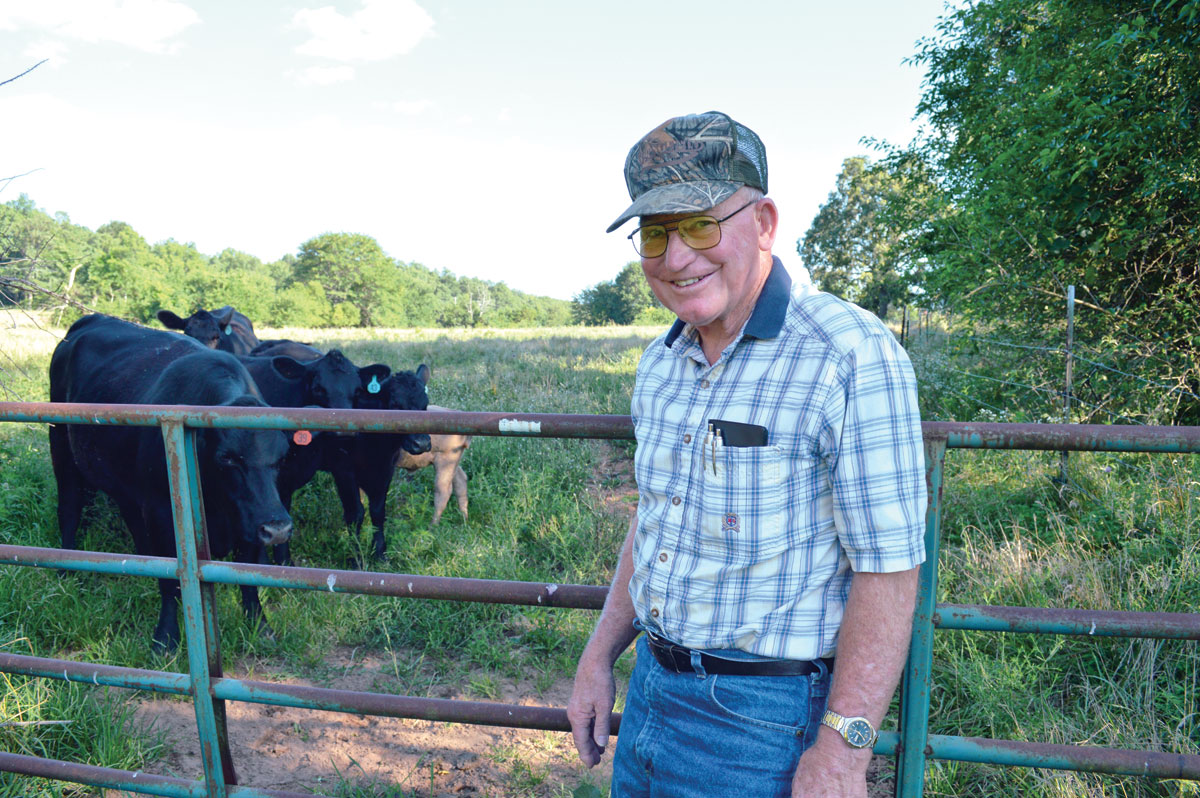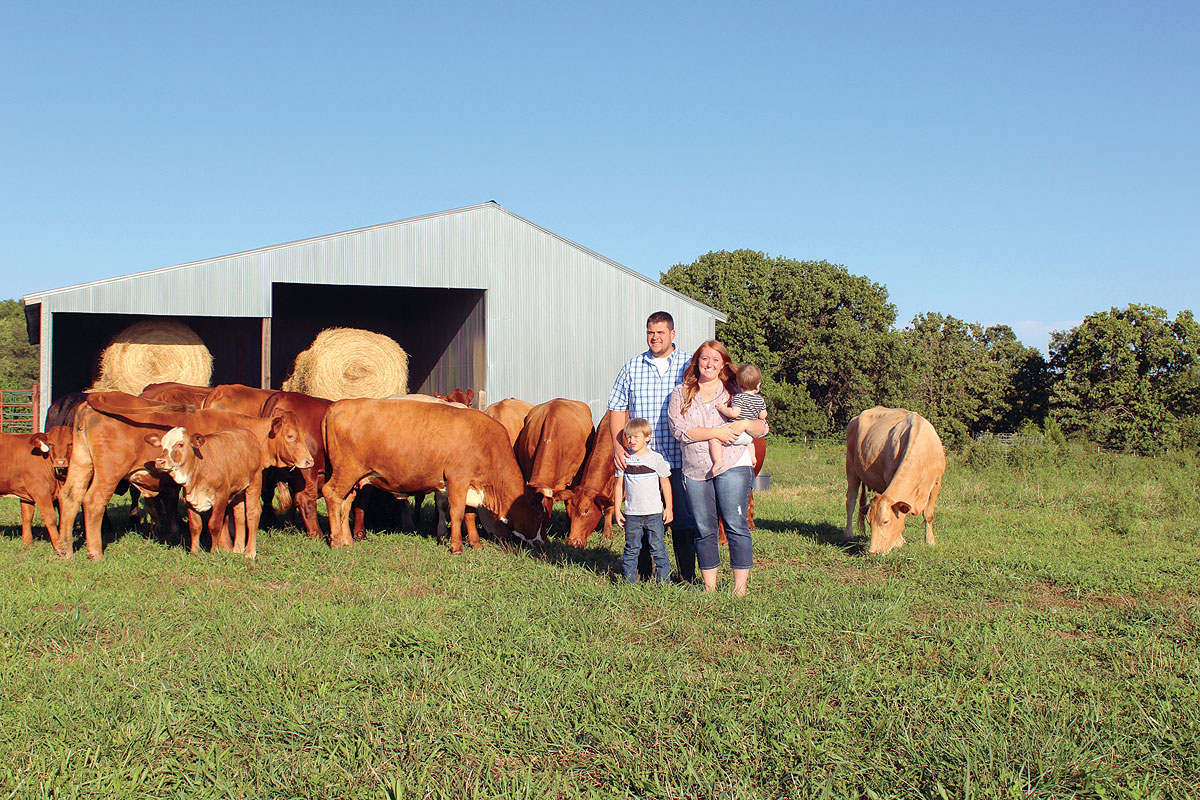
A self-proclaimed Wisconsin “Cheesehead” has found a new home away-from-home in the Missouri Ozarks, complete with rolling hills and plenty of room for cattle to graze, as well as a new agritourism venture.
Bob Bleser, along with his wife Mary, purchased the 640-acre White Buffalo Ranch in rural Laclede County, Mo., in 2015.
Bob and his family, which includes daughters Bridget and Brooke, currently reside on an Elkhorn, Wis., and farm about 1,000 acres, growing corn, soybeans, wheat and alfalfa. They also raise Gelbvieh-based cattle.
In 2008, the Blesers began looking at expanding their operations. They purchased and rented property, about 1,000 acres in all, and began farming in Tennessee, following the same path of the operation in Wisconsin.
“In 2007, we delivered hay to that area. We literally loaded hay onto trucks, and didn’t know where they were going,” Bob recalled. “Of the 12 or so loads we send down there, everyone paid, with the exception of two people. In the spring of 2008, I started knocking on doors, trying to collect. While I was there, I met an individual who planted the seed of multiple locations.”
Bob said the man he spoke with had cattle ranches, strawberry farms and other farming operations across the country.
They had planned to move the entire cattle operation to Tennessee, but it didn’t work out the way they had hoped.
“When commodity prices and land values escalated, every pasture had the fences getting ripped out and people were converting pasture land to row crops, so we had a challenge securing more pasture land,” Bob said. “That’s why we started looking in Missouri for a third potential site.”
Bob, who also worked in sales, management and as an agronomist with Syngenta and Garst Seed Co., then as a grain marketing advisor for Cargill, traveled between his Wisconsin and Tennessee farms for several years, but finally decided to sell the Tennessee holdings.
“We had looked to expand our cattle operation to Missouri, because Missouri is a cattle state,” Bob explained. “At that time it was the idea of adding a third location. The challenge is realizing limitations as age starts to kick in and the long hours started to catch up, so we started looking in Missouri with the concept and idea that the grain markets were starting to set back a little and land values were probably going to recess a bit. We bought our land in Tennessee at the right price and we were able to liquidate it at auction last year.”
The Blesers brought about 50 head of cattle from Tennessee to begin the Missouri cattle operation.
“Everything we are breeding right now is purebred Gelbvieh,” Bob said. “We’ve been able to bring some of our animals down from Wisconsin, but we still have about 75 momma cows and calves (in Wisconsin). We actually raise 75 cows and our replacement heifers on an 8-acre dirt lot and a 5-acre lot.”
He added that raising beef cattle in a dry lot situation was not ideal, but Wisconsin weather, especially in the winter months, spring and fall, is not ideal for grazing cattle.
The biggest challenge for Bob has been learning about new forages.
“I’m learning a lot about fescue,” Bob said with a laugh. “It’s the fact that different forages and feeds are more desired by animals. While we try to harvest and put up the fescue at the most tender stage, they just don’t dig into it like they do a wonderful alfalfa mix, which is what we are use to in Wisconsin.
Heat and humidity are another factor Bob, as well as his cattle from Wisconsin, are adjusting to.
“Our cattle from Tennessee have been acclimated to the heat, but as crazy as it sounds, I love my strawberry blondes and Gelbvieh cattle, in the German text, means red or yellow cattle. Because of that, I like my red and yellow cattle, and we have some with a little Charlaios background, and they seem to do OK. We do have some black cattle, but we are going to keep them in Wisconsin.”
The original owner of the ranch, David Arthur, did have herd of buffalo at the property, but Bob has no plans to bring any back to the ranch. Among the other animals at the ranch were alpacas, a camel, goats and sheep. Bob called it a “petting zoo,” of sorts.
While some of the fencing and pastures are suited for the other species, Bob said they work well for his cattle operation because he is able utilize the system as first-calf heifer pastures, as well as for herd bulls and bulls that are ready to be marketed.
At this time, the White Buffalo Ranch utilizes natural cover for its breeding program, and Bob hopes to establish a spring calving schedule, once all of the cattle are brought from Wisconsin, because of the pastures available in the spring.
They retain many of their heifers as replacements and have several buyers for their bulls.
Another difference Bob is enjoying at his Missouri farm is the availability of a hay shed, which allows him to eliminate the need for balage, which is a main feed source for his herd in Wisconsin.
“We have some of our parcels seeded with Sudangrass right now, and I think we will be wrapping that, but we are trying to utilize our resources, our land, as much as possible,” Bob said.
In addition to having plenty of space of a cattle operation that promotes quality over quaintly, the Blesers saw an opportunity to bring in new source of income by offering a vacation/retreat destination for families and corporations.
“We work with such limited, thin margins in agriculture,” Bob said. “I don’t care if it is beef, dairy, row crops; the thin margins are competitive, no matter which industry you work with. We figured it is one thing to try and purchase land here and cash flow it, but it is another thing to have a diversified portfolio.”
At the White Buffalo Ranch, Bob and Mary saw an opportunity to utilize two lodges on the property. Thus far, the facilities are enjoying constant bookings.
The ranch features secluded, rustic, yet luxurious dining and great lodges filled with mounts of elk and moose, bobcats and animals from African safaris, and can accommodate nearly 30 people. Guests are also welcome to spend time in the pool, fishing or kayaking in a pair of large ponds, exploring portions of the property or just relaxing.
While the property is being marketed as a get-a-way, Bob said it is a working farm first.
“We’re not a dude ranch, we aren’t a resort,” Bob said. “We are a farm that can accommodate guests in a private lodge. How often can you go to a working ranch and have something like this? Multiple diversification is really what this place has to offer. Cattle is our foundation, but as the other aspect gets rolling, we can have guests year round.”
Bob is quick to offer ranch tours to the lodge guests, and takes every opportunity presented to share his knowledge about agriculture and farming.
“I really try to educate people while they are here,” he said. “We can share things with people, our experiences that hopefully five, 10 years from now they will remember… Guests we had recently from an urban community were very removed from the farm and I spent an hour fielding questions about genetics, BT corns, if we used herbicides, the difference between organic and non-organic crops. When I get the opportunity to share modern agriculture and agriculture science and how it works to feed this world’s growing population, I try to be an ambassador. If I can help education and bridge part of the disconnect that taking place and be a single voice, I will do that.”
The operation now encompasses about 800 acres and Bob splits his time between the two farming operations.
“It isn’t always easy and life isn’t always where you can snap your fingers, but I travel between the two,” he said. “As the old saying goes, ‘Faith, family and farm.’”







